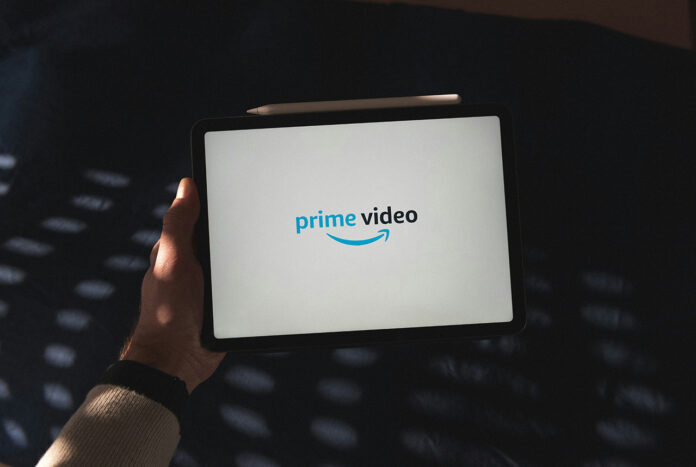
With over 200 million users worldwide, Amazon Prime Video is one of the most popular streaming platforms, and it’s easy to see why. Whether you’re in the mood for an award-winning drama, a laugh-out-loud comedy, or a fun family movie night, Prime Video’s growing library includes thousands of titles, from Amazon Originals to rented blockbusters and timeless classics.
But with such a wide selection comes a real mix of content. Light, educational shows for kids can live right alongside intense thrillers and more mature storylines. And because it’s easy to jump between categories, or even accidentally land on a preview, it’s important to take a few minutes to set up parental controls. With the right settings in place, you can feel more confident about what your child sees while browsing or watching online content.
What Inappropriate Content Might Be on Amazon Prime Video?
Prime Video has a little bit of everything, which is what makes it so appealing. But it also means that younger viewers can stumble across content that isn’t age-appropriate. Alongside cartoons and family-friendly shows, you’ll also find intense action series, dark comedies, and thought-provoking dramas that tackle serious themes.
Amazon Originals like “The Boys,” “Reacher,” and “The Marvelous Mrs. Maisel” are all critically acclaimed, but not exactly made for kids. Even trailers for these shows can autoplay as you’re scrolling through the app, so it’s possible for children to come across mature content even if they’re not actively watching it.
Another thing worth mentioning is that not all content on Prime Video is included with your subscription. Rented or purchased titles may not follow your existing parental settings unless you’ve taken extra steps. That makes it even more important to double-check your parental settings to keep young eyes from seeing something you don’t want to see.
How To Set Up Amazon Prime Video Parental Controls
Amazon Prime Video gives you a handful of helpful tools to manage what your kids can (and can’t) watch. It might not have as many bells and whistles as some other platforms, but the features it does offer can make a big difference, especially once you know where to find them. From setting up a kid-specific profile to blocking mature content, we’ll walk you through each step-by-step.
How To Create and Manage Prime Video Profiles
Creating individual profiles helps personalize the experience for each viewer and lets you designate which profiles are safe for kids. A child profile will automatically filter out mature content and display only age-appropriate titles.
Here’s how to set it up:
- Open the Prime Video app or go to the website. Log in with your Amazon account.
- Click or tap on the profile icon. This is usually found in the upper-right corner.
- Select “Add new” or “Manage profiles.” Choose to create a new profile for your child.
- Name the profile and toggle “Kid’s profile” ON. This will apply automatic restrictions for children 12 and under.
- Save your changes. Once saved, your child’s profile will only show titles suited for their age group.
How To Set Content Restrictions Based on Age Ratings
Age restrictions let you block access to shows and movies rated beyond a specific maturity level. These settings apply across all devices using your Amazon account.
To set video content restrictions:
- Go to Amazon.com and log in to your account.
- Click “Accounts & Lists” in the top right, and then choose “Account.”
- Scroll to “Digital Content and Devices” and select “Prime Video Settings.”
- Click the “Parental Controls” tab.
- Under “Viewing Restrictions,” choose your desired age rating. You can select between General, Family, Teen, or Mature.
- Apply the settings to all registered devices. This ensures consistency across TVs, tablets, phones, and more.
How To Set Up a PIN for Parental Controls
A Prime Video account PIN acts as a gatekeeper, preventing unauthorized access to restricted content or purchases. It’s a simple way to maintain boundaries, even if your child navigates the app independently.
To create or update your PIN:
- Log in to Amazon.com and head to your “Prime Video Settings.”
- Click the “Parental Controls” tab.
- Find the “PIN” section and enter a five-digit number.
- Save your PIN and choose where it should apply. You can require it for viewing restricted content and/or making purchases.
How To Control Rentals and Purchases
Even with content restrictions in place, kids might accidentally buy or rent movies. Fortunately, Amazon gives you the option to lock purchases behind your PIN.
To restrict purchases:
- Visit your “Prime Video Settings” at Amazon.com.
- Go to the “Parental Controls” tab.
- Scroll down to “Purchase Restrictions.”
- Enable the option that requires your PIN for all purchases and rentals.
- Save your settings to lock them in.
How To Turn Off Autoplay for Next Episodes
Autoplay can keep kids watching longer than planned—or lead them into content you haven’t approved. Turning off autoplay puts you back in control.
To disable autoplay:
- Go to Prime Video on your web browser.
- Click on your profile icon and choose “Account & Settings.”
- Select the “Playback” tab.
- Toggle “Autoplay” OFF.
- Changes will apply across all devices linked to your account.
How To Block Explicit Content in Prime Video Music and Podcasts
If your family uses Amazon Music or listens to podcasts through Alexa, it’s a good idea to filter out explicit content.
To enable filters:
- Open the Amazon Alexa app on your phone.
- Tap “More,” then choose “Settings.”
- Select “Music & Podcasts.”
- Choose “Explicit Language Filter.”
- Turn the filter ON. This setting blocks explicit songs and podcast episodes across Alexa-enabled devices.
Using Amazon Kids+ for Additional Parental Control
If you’re looking for a more locked-down, kid-focused experience, Amazon Kids+ (formerly FreeTime) is a great option that offers thousands of age-appropriate books, TV shows, movies, educational apps, and games, all created with younger viewers in mind. Amazon Kids+ is available as a standalone subscription, but users often get discounts or bundled access with their Prime membership.
What really sets it apart is how much control it gives parents. You can set screen time limits, filter content by age, block specific titles, and manage access to apps and websites. Plus, Amazon will send you regular activity reports and notifications, so you always know what your child is watching, reading, or playing.
Need to make changes on the go? No problem! The Amazon Parent Dashboard makes it easy to adjust settings right from your iOS or Android devices.
Amazon Kids+ is a great option for parents who want a safer, ad-free space where kids can explore independently without accidentally stumbling onto mature or inappropriate content. And if your household already uses Amazon Fire TV devices, Fire tablets, or Echo devices, setting up Amazon Kids+ is easy as 1-2-3.
Additional Parental Control Tips for Amazon Prime Video
Setting up restrictions is a great first step, but there are a few extra things you can do to make Amazon Prime Video even more kid-friendly:
- Review watch history together: Sit down with your child occasionally and scroll through their watch history. It’s a great way to spark conversations and make sure everything they’re viewing aligns with your family’s values.
- Use the “Watch Next” section as a clue: This section often reveals what your child is clicking on most frequently. If you see something questionable, it might be time to adjust their settings and have a quick chat.
- Set boundaries around screen time: Prime Video doesn’t include built-in screen time limits, but you can use your device’s parental controls (like Screen Time on iOS or Digital Wellbeing on Android) to help manage how long your child is watching.
- Keep smart TVs in shared spaces: When kids watch in common areas like the living room, it’s easier to monitor what’s on without needing to hover. It also gives you more opportunities for family bonding time.
- Disable voice purchasing on Alexa devices: If your home uses Alexa, be sure to turn off voice purchasing or require a PIN to avoid accidental rentals or purchases.
- Check app permissions on mobile devices: Make sure your child’s tablet or phone doesn’t have access to other video apps or browsers that could sidestep your Prime Video restrictions.
How To Monitor and Adjust Amazon Prime Video Settings Over Time
As your child grows, their viewing preferences and your comfort level may shift. That’s why it’s always a good idea to revisit your parental control settings every few months.
Take a look at your current content restriction level. Your 10-year-old may not need as tight of restrictions as they did when they were seven. Amazon makes it easy to adjust the age rating in your account settings without having to start from scratch.
It’s also smart to stay on top of new content. Amazon releases new shows and movies frequently, which may not be automatically filtered depending on your settings. A quick scan through your child’s profile can help you catch anything new that may need reviewing.
But most importantly, don’t forget to talk with your child. Ask what shows they’re enjoying and use it as a chance to check in on how they’re using streaming time. When kids understand the “why” behind the rules, they’re more likely to follow them and come to you with questions when something feels off.
Other Ways StreamSafely Can Help
Setting up parental controls is a great start, but there’s a lot more you can do to keep your streaming safe and stress-free. That’s where StreamSafely comes in.
We offer easy-to-follow guides for all the major platforms, like Netflix, Disney+, and even Twitch. Not sure how to set restrictions? We walk you through it. Want to avoid shady streaming sites? We show you what to watch out for.
If you’re looking for trustworthy, kid-friendly content, check out our Where to Watch page. It’s a great place to find legitimate streaming services that prioritize safety.
No matter how your family streams — on phones, tablets, smart TVs, or all of the above — StreamSafely is here to help you stay informed, in control, and confident about what’s on screen.





